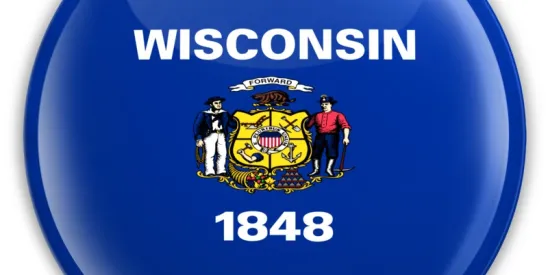McLaughlin v. Gaslight Pointe Condominium Association, LTD
No. 2023AP1011 (Wis. Ct. App. Apr. 17, 2024)
In McLaughlin v. Gaslight Pointe Condominium Association, LTD, the Wisconsin Court of Appeals contributed to Wisconsin’s ever-growing body of caselaw examining when an insured’s intentional conduct may constitute an “occurrence” within the meaning of a CGL policy. No. 2023AP1011 (Wis. Ct. App. Apr. 17, 2024) (recommended for publication). The court also examined several exclusions commonly found in CGL policies. In brief, the facts of the case are as follows. Several condominium owners filed a complaint against Gaslight (the property’s condominium association) in February 2022, seeking damages and injunctive relief in connection with alleged defects and damages in their condominium units located at a condominium development in Racine, Wisconsin. The owners alleged, among other things, that widespread water infiltration and associated issues plagued their units, and that Gaslight’s board of directors neglected reports of structural damage to the building, engaged unqualified contractors, and failed to supervise the work of contractors. As a result, the homeowners alleged that they suffered physical, as well as monetary, deterioration of their properties. After suit was filed, Auto-Owners Insurance Company agreed to defend Gaslight under a reservation of rights, and shortly thereafter, intervened in the case and sought a declaratory judgment that it owed no duty to defend or indemnify Gaslight with respect to the owners’ claims. At issue were two coverages: a CGL coverage form and an E&O coverage endorsement.
The circuit court granted Auto-Owners’ motion, and concluded that the CGL coverage form did not provide coverage because Gaslight’s “reasoned decisions” to delay making repairs to the buildings did not constitute an “occurrence” within the meaning of the CGL coverage form. The Circuit Court stated that, as a result of those decisions, the resulting water intrusion was not “something that happened accidentally, happened suddenly, or was unforeseen.” With respect to the E&O coverage endorsement, the circuit court concluded that there was an initial grant of coverage, but that the “property damage” and “bodily injury” exclusions barred coverage.
On appeal, the Wisconsin Court of Appeals affirmed in part, reversed in part, and remanded the cause for additional proceedings. With respect to the CGL coverage, the court disagreed that the record illustrated the lack of an “occurrence.” Instead, the court noted that, “although an insured’s deliberate or intentional conduct may not itself constitute an occurrence, it may ‘set in motion a chain of events that includes an accident, a covered occurrence, causing property damage.’” It stated that the fact pattern at issue followed a familiar format to previous cases: “(1) an insured’s conduct leads to (2) an event that (3) causes damage.” Therefore, the court stated, the issue was not Gaslight’s “volitional” decisions regarding maintenance or whether the action that caused the damages was intended, but rather, whether the “injury or damages was foreseeable or expected.”
Applying this standard, the court stated that a question of fact existed with respect to whether the water intrusion at issue could constitute an “occurrence” within the meaning of the CGL coverage form. Specifically, it noted that a jury could conclude that “Gaslight neither foresaw nor expected the damage to the Owners’ units that followed its attempts to repair its buildings.” In that case, the court stated, the water intrusion would constitute an occurrence under the policy.
The court also rejected Auto-Owners’ argument that the “Damage to Property” and “Fungi Or Bacteria” exclusions applied to preclude coverage. With respect to the “Damage to Property” exclusion, Auto-Owners argued that the Owners were insureds under the policy because they were members of the named insured, which was purportedly a LLC, and because there was an endorsement that included as insureds “each individual unit owner of the insured condominium, but only with respect to liability arising out of the ownership, maintenance or repair of that portion of the premises which is not reserved for that unit owner’s exclusive use or occupancy.” The court rejected Auto-Owner’s first argument because there was no dispute that Gaslight was a non-stock corporation, not an LLC. The court rejected Auto-Owners’ second argument, determining that the Owners did not qualify as “insureds” for the purpose of the exclusion because the endorsement only made them insureds “with respect to liability arising out of the ownership, maintenance or repair of that portion of the premises which is not reserved for that unit owner’s exclusive use or occupancy.” That “portion of the premises,” the court stated, are the common areas of the condominium buildings. Given that the owners’ claims did not seek to hold Gaslight liable for damage to those areas, the owners could not be considered “insureds” with respect to such liability.
With respect to the “Fungi Or Bacteria” exclusion, the court indicated that the “state of the record” precluded it from assessing its applicability. It stated that, though the record indicated mold was present in the owners’ units, the evidence did not indicate what portion, if any, of the property damage in the units would not have occurred, in whole or in part, but for the existence or presence of mold. Accordingly, the court stated that further factual development was required before the applicability of the exclusion is considered.
Finally, the court considered whether the E&O coverage endorsement provided coverage for the claims. The court began by noting that Auto-Owners appeared to concede that there was an initial grant of coverage for any loss caused by Gaslight’s failure to properly manage the condominium premises. As such, the court looked to whether any exclusions may operate to preclude coverage. Specifically, the court looked at the “property damage” exclusion, which bars coverage for any damages that Gaslight may be found liable to pay to compensate the owners for the “property damage” in their units. Because Gaslight did not contest that proposition, and because it did not demonstrate that attorney’s fees, homeowner’s association fees, or homeowner’s insurance would constitute covered “damages,” the court concluded that the exclusion precluded coverage under the E&O coverage endorsement.



 />i
/>i

